|

Examining
the Language
of Language
Education.
Jargon, acronyms, theoretical contructs, persons of note.... Knowing the language and the players is necessary to navigating the territory. Can you decipher such acronyms as EFL, SLA, and LEP, to name three out of hundreds? Could you clarify what "i + 1" refers to? How about "pedagogical content knowledge" or "backwards design?"
The Special Methods Glossary is designed to help you answer these questions as the first step to building a collection of terms, definitions, and comments for students and teachers of languages. As always with education, the Glossary is a work in progress. Your contributions are welcome here. Contribute, collaborate, and communicate.
If you've puzzled about an unknown acronym or some odd-sounding jangle of jargon lurking in one of your texts, why not capture it and send a query through cyber space to the Special Methods team at tulipan@corndancer.com. Please include the context in your message. The Planet Gnosis team will search for an answer and share what we find.
EFL = English as a Foreign Language
LEP = Limited English Proficient
SLA = Second Language Acquisition
American Association of Teachers
in French
(AATF); the American Association of Teachers in French is the largest national association of French teachers in the world, whose goal is to represent and share the French language, culture, and civilization. AATF hosts annual conventions and provides a variety of resources for its members.
— RB July 7, 2008

American Association of Teachers
of Spanish and Portuguese
(AATSP); the American Association of Teachers of Spanish and Portuguese is a great organization to expand your education horizons, network with colleagues, and stay on top of issues. The cost of a student membership is $25 and includes membership in your local charter. You will receive three publications: Hispania, Enlace, and the Portuguese Newsletter.
— MSA July 8, 2008

American Council on Teaching of Foreign Language
(ACTFL); the American Council on Teaching of Foreign Language is a great organization to help you succeed in your career. This organization is dedicated to the improvement and expansion of Foreign Language in your community. The cost of a student membership is $25, which includes a copy of the Language Educator, a practical guide to classroom tools.
— MSA July 8, 2008

Arkansas Foreign Language Teachers Association
(AFLTA); the Arkansas Foreign Language Teachers Association serves to promote the general interest of the teaching of foreign languages and cultures, provide professional development, and make available resources for teachers of foreign languages in the state of Arkansas.
— PP July 8, 2008

Backwards Design
the concept (created by Wiggins and McTighe) that planning a syllabus begins by deciding on the goals and outcomes of the course first; then working "backward" to plan assessments secondly and instructional activities and procedures lastly.
— FAB July 1, 2008

Center for Applied Linguistics
(CAL); a private, non-profit organization of scholars and educators who use the findings of linguistics and related sciences to identify and address language-related problems and issues. The organization conducts research, teacher education, analysis and dissemination of information, design of instructional materials, conference planning, program evaluation, and policy analysis.
— RB July 7, 2008

Foreign Language Teaching Forum
(FLTEACH); an online resource for foreign language teachers. It provides interactive discussions on foreign language, teaching methods, training opportunities and curriculum information. FLTEACH is open to all levels of educational professionals.
— RB July 7, 2008

i + 1
input + one; one of Krashen's principles of second language acquisition. Language input should be one level beyond what a student knows so that they are challenged to move beyond what they know and to negotiate meaning in the target language.
— FAB July 1, 2008

Knowledge about Language
(KAL); a broad category used in Second Language Teacher Education (SLTE) covering grammar; orthography; language modes including reading, writing, listening, and speaking; language use including pragmatics, discourse analysis, and sociolinguistic variation; and language learning including methodology, strategies, and activities. The key word in the concept is "about." KAL does not refer to how one learns, comprehends, or produces a language (Bartels, 2009). Bartels also suggests that SLTE programs shift the focus away from academic practices such as discussing theories in favor of providing learning experiences that integrate other relevant factors such as participating in activities central to teaching.
Reference
Bartels, N. (2009). Knowledge about language. In A. Burns & J.C. Richards (Eds.). The Cambridge Guide to Second Language Teacher Education (pp. 125-134). Cambridge: Cambridge University Press.
— FAB July 5, 2009

Krashen, Stephen
Dr. Stephen Krashen graduated from UCLA in 1972, receiving his Ph.D in Linguistics. He is now an Emeritus
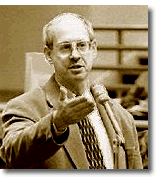 Professor of Education at the University of Southern California, where he has taught since 1978. He has received numerous awards for his articles and books, which now number over 350. Those awards include the Mildenberger Award (1982) and the Pimsleur Award (1982). Some of his most notable contributions to bilingual education include a comprehensive theory of second language acquisition, co-founder of the Natural Approach, and invention of sheltered subject matter teaching. He continues to publish. His most recent works can be found at his website: www.sdkrashen.com
Professor of Education at the University of Southern California, where he has taught since 1978. He has received numerous awards for his articles and books, which now number over 350. Those awards include the Mildenberger Award (1982) and the Pimsleur Award (1982). Some of his most notable contributions to bilingual education include a comprehensive theory of second language acquisition, co-founder of the Natural Approach, and invention of sheltered subject matter teaching. He continues to publish. His most recent works can be found at his website: www.sdkrashen.com
— RM July 22, 2009

National Association for Bilingual Education
(NABE); the National Association for Bilingual Education is the only national professional organization devoted to representing Bilingual Learners and Bilingual Education professionals through more than 20,000 members, including "teachers, parents, paraprofesionals, administrators, professors, advocates, researchers, and policy makers."
— PP July 8, 2008

Pedagogical Content Knowledge
(PCK); knowing how to teach your subject matter for student understanding. See the article, "Learning Flourishes when Pedagogy Merges with Content Knowledge."
— FAB July 30, 2009

Piaget, Jean
Jean Piaget (1896-1980), noted Swiss epistemologist, made observational studies on children in order to develop his theory of cognitive development. His theory concluded that children go through four stages of cognitive
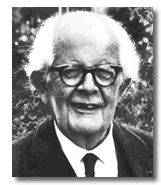 development that can vary in age for each individual. The first stage, sensorimotor intelligence, occurs when a child uses her five senses to discover her surroundings. The second stage, preoperational thought, occurs when children begin to use their imagination to develop ideas of things outside of their immediate environment. The third stage, concrete operations, occurs when children begin to use logic to develop concrete thoughts. The fourth stage, formal observations, occurs when a child begins to make predictions and think abstractly about an idea. Most often, school-aged children will be going through stages two through four — for educators, Piaget’s theories offer important insight into methods and strategies for teaching children at these developmental stages.
development that can vary in age for each individual. The first stage, sensorimotor intelligence, occurs when a child uses her five senses to discover her surroundings. The second stage, preoperational thought, occurs when children begin to use their imagination to develop ideas of things outside of their immediate environment. The third stage, concrete operations, occurs when children begin to use logic to develop concrete thoughts. The fourth stage, formal observations, occurs when a child begins to make predictions and think abstractly about an idea. Most often, school-aged children will be going through stages two through four — for educators, Piaget’s theories offer important insight into methods and strategies for teaching children at these developmental stages.
— RbM February 10, 2010

Second Language Teacher Education
(SLTE)
Prior to the 1970s, the knowledge base of language teacher education consisted of two components: content of the target language (TL) and teaching of the target language. A teacher’s knowledge of language, including proficiency, phonology, and structure, was considered sufficient for teaching the TL. The pedagogy of language teaching at the time included one teaching methods course, which focused mostly on discrete teaching skills. It was assumed that teacher candidates would combine these two components — content and pedagogy — into lessons during their practicum or on the job.
During the 1980s a shift occurred in understanding how languages should be taught. Researchers begin to look closely at teachers and their methods and approaches to the craft. What do they already know? What do they do when they teach? Researchers also began to explore the things that teachers considered "teachable" about language and how they represented these teachable elements to students.
The century closed with an emerging awareness that learning to teach is "an ongoing, development process" (Graves, 2009). Teacher-learners are active agents in acquiring competency in the art of knowing how to teach. Roberts (1998) proposes a view of language teaching that consists of several knowledge bases: content knowledge, pedagogical content knowledge, general pedagogic knowledge, curricular knowledge, contextual knowledge, and process knowledge.
Currently, the key questions raised in SLTE are two: "What does one teach when one teaches language, and how does one educate teachers to teach it?" (Graves, 2009, p. 120). Graves proposes that it's not what is relevant to language, but more importantly, who makes it relevant — how they choose to proceed with instruction and why they make the teaching choices they make. She continues that "teachers themselves need to conceptualize and experience the relevance in their practice" (ibid.)
References
 Graves, K. (2009). The curriculum of second language teacher education. In A. Burns & J.C. Richards (Eds.), The Cambridge Guide to Second Language Teacher Education (pp. 115-124). Cambridge: Cambridge University Press. Graves, K. (2009). The curriculum of second language teacher education. In A. Burns & J.C. Richards (Eds.), The Cambridge Guide to Second Language Teacher Education (pp. 115-124). Cambridge: Cambridge University Press.
 Roberts, J. (1998). Language teacher education. London: Arnold. Roberts, J. (1998). Language teacher education. London: Arnold.
— FAB July 5, 2009

Selinker, Larry
Larry Selinker is a second language acquisition specialist most notable for his 1972 proposal of the Interlanguage Theory. His theory postulates that a learner of a second language will develop an “interlanguage,” or a language
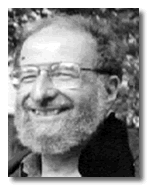 system that exists in-between the target language and what the learner expects the target language to be because of influences such as the learner’s native language.
system that exists in-between the target language and what the learner expects the target language to be because of influences such as the learner’s native language.
In 1977, Selinker was appointed director of the University of Michigan’s English Language Institute, a position he held until 1982, as well as Professor of Linguistics. His university course, “The Good and Bad Language Learner,” was widely popular among undergraduate students. When he retired in 1994, the Regents of the university awarded Professor Selinker an emeritus title. Throughout his career, Selinker published pioneering works on the subject of second language acquisition, including his paper, “Language Transfer,” which first appeared in a 1969 edition of General Linguistics.
— CLA February 10, 2010

Southern Conference on Language Teaching
(SCOLT); a regional conference that provides research, materials and information on the study of modern and classical languages, literatures and cultures. SCOLT offers networking and professional development opportunities to members committed to the enhancement of foreign language education.
— RB July 7, 2008

Swain, Merrill
Dr. Merrill Swain is known for her output hypothesis, which states that speaking the target language (TL) for communication makes the learner aware that there is a difference between what they want to say and what they are able to say. Swain’s hypothesis states that speaking the TL allows the learner to test and adapt to new rules of the target language and allows learners to self-evaluate what they know about the language.
Dr. Swain is a professor in the Department of Curriculum, Teaching, and Learning at the Ontario Institute for Studies in Education of the University
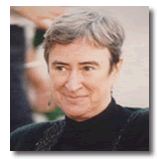 of Toronto. Her special interests include bilingual education, especially French immersion, and communicative second language learning, testing, and teaching. In 2003, Dr. Swain received the Prix Robert Roy Award, which is presented to an active Canadian second language educator. In 2004, she was presented with the American Association of Applied Linguistics (AAAL) distinguished Scholarship and Service Award. Dr. Swain has written over 160 articles and chapters and co-edited four books. Her current research focuses on collaborative dialogue in learning a second language.
of Toronto. Her special interests include bilingual education, especially French immersion, and communicative second language learning, testing, and teaching. In 2003, Dr. Swain received the Prix Robert Roy Award, which is presented to an active Canadian second language educator. In 2004, she was presented with the American Association of Applied Linguistics (AAAL) distinguished Scholarship and Service Award. Dr. Swain has written over 160 articles and chapters and co-edited four books. Her current research focuses on collaborative dialogue in learning a second language.
Reference
 Collaborative dialogue and second language learning. Retrieved August 3, 2009, from University
of Iowa: International Programs Web site: http:// international.uiowa.edu/ centers/ flare/ news/ past-events/ swain.asp. Collaborative dialogue and second language learning. Retrieved August 3, 2009, from University
of Iowa: International Programs Web site: http:// international.uiowa.edu/ centers/ flare/ news/ past-events/ swain.asp.
— BaS February 10, 2010

C O N T R I B U T O R S
 MSA — Monica Akers, M.A.T. class of 2007-2008 MSA — Monica Akers, M.A.T. class of 2007-2008
 RB — Rebekah Burns, M.A.T. class of 2007-2008 RB — Rebekah Burns, M.A.T. class of 2007-2008
 CLA — Chelsea La Near, M.A.T. class of 2009-2010 CLA — Chelsea La Near, M.A.T. class of 2009-2010
 RbM — Rebekah Mann, M.A.T. class of 2009-2010 RbM — Rebekah Mann, M.A.T. class of 2009-2010
 RM — Remington Myers, M.A.T. class of 2009-2010 RM — Remington Myers, M.A.T. class of 2009-2010
 PP — Pamela Pesnell, M.A.T. class of 2007-2008 PP — Pamela Pesnell, M.A.T. class of 2007-2008
 BaS — Bailey Sharp, M.A.T. class of 2009-2010 BaS — Bailey Sharp, M.A.T. class of 2009-2010
 FAB — Freddie A. Bowles FAB — Freddie A. Bowles

Freddie A. Bowles
Assistant Professor, Curriculum and Instruction
University of Arkansas
fbowles@uark.edu
Meanings keep changing day by day. Even when we ourselves
use a word a second time, it's not exactly the same as the time before.
— Allen Walker Read, 1989

Planet Gnosis is directed by Dr. Freddie A. Bowles,
Assistant Professor of Foreign Language Education
in the Department of Curriculum and Instruction,
the University of Arkansas at Fayetteville.
Planet Gnosis is dedicated
to the exploration of education and teaching.
It is a cybersite of CornDancer.com,
a developmental web for the Mind and Spirit.
Submissions are invited.
|
|
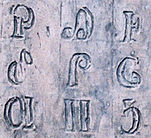





 Professor of Education at the University of Southern California, where he has taught since 1978. He has received numerous awards for his articles and books, which now number over 350. Those awards include the Mildenberger Award (1982) and the Pimsleur Award (1982). Some of his most notable contributions to bilingual education include a comprehensive theory of second language acquisition, co-founder of the Natural Approach, and invention of sheltered subject matter teaching. He continues to publish. His most recent works can be found at his website:
Professor of Education at the University of Southern California, where he has taught since 1978. He has received numerous awards for his articles and books, which now number over 350. Those awards include the Mildenberger Award (1982) and the Pimsleur Award (1982). Some of his most notable contributions to bilingual education include a comprehensive theory of second language acquisition, co-founder of the Natural Approach, and invention of sheltered subject matter teaching. He continues to publish. His most recent works can be found at his website:  development that can vary in age for each individual. The first stage, sensorimotor intelligence, occurs when a child uses her five senses to discover her surroundings. The second stage, preoperational thought, occurs when children begin to use their imagination to develop ideas of things outside of their immediate environment. The third stage, concrete operations, occurs when children begin to use logic to develop concrete thoughts. The fourth stage, formal observations, occurs when a child begins to make predictions and think abstractly about an idea. Most often, school-aged children will be going through stages two through four — for educators, Piaget’s theories offer important insight into methods and strategies for teaching children at these developmental stages.
development that can vary in age for each individual. The first stage, sensorimotor intelligence, occurs when a child uses her five senses to discover her surroundings. The second stage, preoperational thought, occurs when children begin to use their imagination to develop ideas of things outside of their immediate environment. The third stage, concrete operations, occurs when children begin to use logic to develop concrete thoughts. The fourth stage, formal observations, occurs when a child begins to make predictions and think abstractly about an idea. Most often, school-aged children will be going through stages two through four — for educators, Piaget’s theories offer important insight into methods and strategies for teaching children at these developmental stages. system that exists in-between the target language and what the learner expects the target language to be because of influences such as the learner’s native language.
system that exists in-between the target language and what the learner expects the target language to be because of influences such as the learner’s native language. of Toronto. Her special interests include bilingual education, especially French immersion, and communicative second language learning, testing, and teaching. In 2003, Dr. Swain received the Prix Robert Roy Award, which is presented to an active Canadian second language educator. In 2004, she was presented with the American Association of Applied Linguistics (AAAL) distinguished Scholarship and Service Award. Dr. Swain has written over 160 articles and chapters and co-edited four books. Her current research focuses on collaborative dialogue in learning a second language.
of Toronto. Her special interests include bilingual education, especially French immersion, and communicative second language learning, testing, and teaching. In 2003, Dr. Swain received the Prix Robert Roy Award, which is presented to an active Canadian second language educator. In 2004, she was presented with the American Association of Applied Linguistics (AAAL) distinguished Scholarship and Service Award. Dr. Swain has written over 160 articles and chapters and co-edited four books. Her current research focuses on collaborative dialogue in learning a second language.
